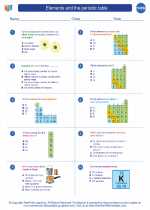The Sun
The Sun is the star at the center of our solar system. It is a nearly perfect sphere of hot plasma, with internal convective motion that generates a magnetic field via a dynamo process. The Sun is by far the most important source of energy for life on Earth.
Structure of the Sun
The Sun can be divided into several layers. From the inside out, the solar interior consists of the core, the radiative zone, and the convective zone. The outer layer of the Sun is called the photosphere, and above that lies the chromosphere and the corona.
Core
The core is the innermost layer of the Sun, where nuclear fusion occurs. The extreme pressure and temperature in the core cause hydrogen atoms to collide and fuse into helium, releasing a tremendous amount of energy in the process.
Radiative Zone
The radiative zone is the layer of the Sun through which energy is transferred outward by means of radiation. Photons created in the core are scattered in this zone and can take thousands of years to reach the convective zone.
Convective Zone
The convective zone is the outermost layer of the solar interior. Energy is transported by the motion of hot gas in the form of convection currents. This layer is characterized by the churning motion of the solar material.
Photosphere
The photosphere is the visible surface of the Sun. It emits the sunlight that we see and is the layer from which energy is emitted into space.
Chromosphere and Corona
Above the photosphere are the chromosphere and the corona. These layers are normally not visible to the naked eye except during a total solar eclipse.
Solar Energy and Solar Wind
The Sun radiates a tremendous amount of energy, which is the primary source of energy for life on Earth. The solar wind, a stream of charged particles released from the upper atmosphere of the Sun, also has a significant impact on the Earth's magnetosphere and atmosphere.
Study Guide
- What are the main layers of the Sun's interior?
- How is energy transported in the radiative zone?
- What is the photosphere and what does it emit?
- What is the solar wind, and how does it affect the Earth?
◂Chemistry Worksheets and Study Guides High School. Elements and the periodic table

 Worksheet/Answer key
Worksheet/Answer key
 Worksheet/Answer key
Worksheet/Answer key
 Vocabulary/Answer key
Vocabulary/Answer key
 Vocabulary/Answer key
Vocabulary/Answer key
 Vocabulary/Answer key
Vocabulary/Answer key
